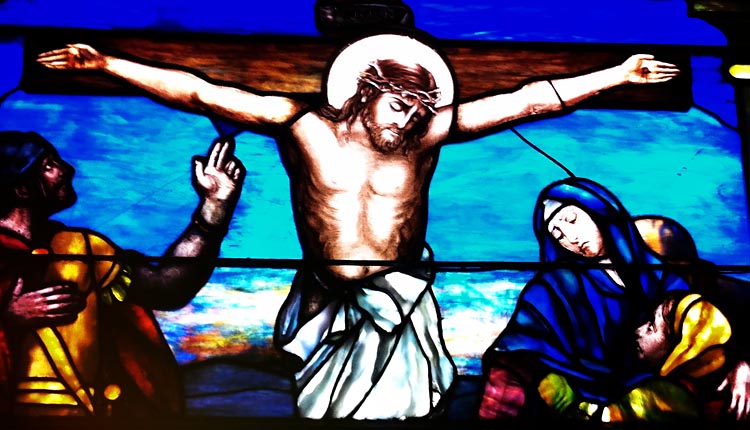Great Women-The First Apostle
by:Worth Green, Th.M., D.Min.
This morning we are talking once more about the Faces Around the Cross. I have entitled the sermon, Great Women, but I want to zero in on one woman. Her name is Mary Magdalene. 1) Mary Magdalene is the only woman mentioned by name or implication in all four gospel as a witness to the crucifixion of Jesus. (Note 1) Mary Magdalene is the only woman mentioned in all four gospels by name or implication as witness to the burial of Jesus by Joseph of Arimathea. (Note 2) 3) Mary Magdalene is the only person in all four gospels who discovers the empty tomb. 4) And Mary Magdalene is the mentioned by name in three of the four gospels as a witness to the resurrection of Jesus. (Note 3) 5) In Matthew and especially in John’s gospel Mary Magdalene is not only a witness to the resurrection, she is the first witness to the resurrection, and arguably, not just the first woman apostle, but the First Apostle, period.
In fact, Mary Magdalene has been called “the Apostle to the Apostles,” meaning that it was Mary who was first preached the good news of the resurrection of Jesus, and the first congregation to which she preached it was made up of the Apostle’s themselves!
But who is Mary Magdalene? Before we can learn who she is, we need to unlearn a lot of the gossip and scandalous stories that have been floating around about Mary Magdalene for the better part of 2,000 years.
Take this matter of Mary Magdalene being a reformed prostitute. This is based upon the story that Luke tells us in chapter 7:36-50. Jesus has gone to dinner in the house of Simon the Pharisee, and he is followed there by a woman who washes his feet with her tears, and dries them with her hair, and anoints them with costly ointment, and covers them with kisses. And when Simon sees it, he says to himself, “If this man were a prophet, he would have known who and what sort of woman this is who is touching him, for she is a sinner!” And you know the rest of the story. You know how Jesus read Simon’s thoughts, perhaps right off his face, for experience tells us that Simon’s holier than thou look of disapproval was obvious. And you remember how Jesus responded. He said, “Simon, I have something to say to you.” And Jesus told Simon the story about creditor who had two debtors, and one debtor owed him about a months wages, and the other debtor owed him more than a years wages. And both of them went bust, and neither of them could pay, so he forgave them both. And then Jesus asked, “Simon, which of the debtors loved their creditor more?” And the answer was so obvious that even Simon got it. The one who is forgiven more, loves more.
And Jesus forgave that woman her sins, as he forgave the sins of all who came to him seeking forgiveness. And he still does that. He forgive us all of our sins, daily and abundantly. And the woman in the story, who was a sinner, and knew it, loved Jesus more than Simon the Pharisee who was long goodness as some measure goodness, but short on love and gratitude and hospitality. And that is the truth of the matter. Yet it is equally true that Luke never says that the name of the woman who sinned was Mary Magdalene. And Matthew (Matthew 26:6-13) and Mark (Mark 14:3-9) tell a similar story, but in their story, the woman is not named as Mary Magdalene, nor is she said to be a sinner. And John tells two stories that resemble both the story of Luke and the story of Matthew and Mark, and the woman in John’s story is named as Mary, but that Mary is the sister of Martha and Lazarus; but she is never called Mary Magdalene. (John 11:1 cf. John 12:3) She is a different Mary. The truth is, that then, as now Mary was a popular name, and there were lots of Mary’s in the gospels. There are so many in fact, that Matthew twice refers to Mary Magdalene and “the other Mary.”
There are other rumors about Mary’s sexual promiscuity. Over the centuries some have identified her with the woman at the well in John 4 who had had five husbands and was living with a man who was not her husband. Still others have identified her with the woman taken in adultery in John 8. Others have said that she was the woman with the issue of blood that was healed by Jesus—the issue was, in itself, a sexual issue. Over the centuries the name of Mary Magdalene has been associated with many of the unnamed women in the New Testament. However, the sure thing we know about Mary’s life B.C., before Christ, is that she is the one from whom Jesus cast seven demons, or evil spirits. (Luke 8:2; Mark 16:9) What was that about?
There is another character in scripture who is said to have had multiple infestations of the demonic, the Gerasene demoniac. In Mark 5:1-20 we read that his man lived among the tombs, and he sometimes went about naked, and lived in proximity to pigs—all this was unclean, and he possessed great strength so that no one could bind him, not even with chains, and he was always crying out and bruising himself with stones.
Every illness of the mind and spirit is different. One can only imagine what poor Mary Magdalene suffered. When tortured the mind and heart suffer even more grievously than the body. Nor can we predict the kind of self-destructive behaviors she engaged in. Maybe we have uncovered yet another reason which she has been associated with a reformed prostitute. It makes no difference. According to St. Matthew, though Jesus was born of a Virgin, he had a experienced prostitute (Rahab), an amateur prostitute (Tamar) and an adulteress (Bathsheba, the wife of Uriah) in his own family tree! (Matthew 1:1-17) God’s forgiveness, as mediated by Jesus Christ, seems to know no bounds!
But enough about Mary’s Past. That was B.C. We all have a life B.C. and A.D., Anno Domino, in the Year of Our Lord. We have called Mary Magdalene the First Apostle, and I believe that she was. She meets the most rigorous definition of an apostle. Let me demonstrate.
The word apostle means, “one who is sent.” Mary certainly meets that Criteria. In the gospels she is sent both by the angels at the empty tomb and by Christ himself to proclaim the good news.
An apostle is one who has seen the risen Lord. in 1st Corinthians chapter 9:1 Paul boast that he himself is an apostle, saying, “Am I not an apostle? Have I not seen Jesus our Lord?” In chapter 15 of the same epistle he makes it clear that he is speaking of the Risen Lord when he list the appearance of the Risen Christ to himself, right alongside the appearances to Peter, and to James, and the to twelve, and to all the apostles. (1st Corinthians 15:3-11)
1Corinthians 15:3 For I delivered to you as of first importance what I also received, that Christ died for our sins in accordance with the scriptures, 4 that he was buried, that he was raised on the third day in accordance with the scriptures, 5 and that he appeared to Cephas, then to the twelve. 6 Then he appeared to more than five hundred brethren at one time, most of whom are still alive, though some have fallen asleep. 7 Then he appeared to James, then to all the apostles. 8 Last of all, as to one untimely born, he appeared also to me. 9 For I am the least of the apostles, unfit to be called an apostle, because I persecuted the church of God. 10 But by the grace of God I am what I am, and his grace toward me was not in vain. On the contrary, I worked harder than any of them, though it was not I, but the grace of God which is with me. 11 Whether then it was I or they, so we preach and so you believed.
Paul lays down the preeminent criteria for being an apostle: to have seen the Risen Jesus. Mary meets that criteria. And Paul’s words make room for her as one of the apostles.
St. Luke’s definition of an apostle is more stringent than Paul’s. In Acts 1:15-22 when the disciples seek to replace Judas, Peter says that they must choose a successor from one of the men who accompanied them during all the time that the Lord Jesus went in and out among them, beginning from the baptism of John until the day when he was taken up from them, and that one of these men must become with the Apostles, a witness to his resurrection.” Mary Magdalene seems to meet Luke’s criteria for being an apostle, too. Not only is she a witness to the resurrection, but according to Luke chapter 8, Mary Magdalene is among those women who first ministered to Jesus and his disciples while they were still in Galilee, sharing with them out of their means. Mary and the other women traveled with the male apostles from Galilee to Jerusalem.
Mark’s definition of an apostle may or may not be more stringent than Paul’s or Luke’s. He is very hard on all the male apostles. Mark holds John and James the sons of Zebedee open to ridicule when he tells how they came to Jesus on the Road to Jerusalem and asked, “Let us sit one on your right hand, and one on your left when you come into your kingdom.” (Mark 10:35-43) Matthew is so embarrassed by that that he has the mother of James and John make the request! (Matthew 20:21-28) And Mark holds Peter open to rebuke when he tries to prevent Jesus from entering Jerusalem to face his suffering and death. When Peter tries to prevent his progress along the Jerusalem road. Jesus tells his disciples that the Son of man must suffer many things, and be rejected by the elders and chief priests and scribes, and be killed, and on the third, rise again. Peter rebuked him. The Jesus Jesus says to Peter “Get behind me, Satan, for you are not on the side of God but of men.” (Mark 8:31-33) And Mark says that though Peter, and all the disciples promise to die with Jesus, following his arrest, “they all forsook him and fled.” (Mark 14:50) And Mark faithfully records how Peter denied Jesus three times, before the cock crowed twice. He says that Peter’s final denial included a curse and an oath. (Mark 14:71-72) Mark does not mention any of the male apostle’s at the foot of the cross. (Though Luke implies it in the “acquaintances” of Luke 23:49, and in John 19:26 we read that the Beloved Disciple was present). Despite overlooking the presence of any of the apostles, Mark does mention that Mary Magdalene was there, along with at least one other woman, also a Mary. And Mark mentions that Mary Magdalene and Mary the Mother of Joses follow Joseph of Arimathea, and saw the place where he put the body of Jesus. And Mark mentions how, early on the morning on the first day of the week, Mary went to the tomb to anoint the body of Jesus, and saw that was empty. (Mark 16:1-8) And she was the first to hear from the Angel that Christ had risen. (Mark 16:1-8) In point of fact, Mark says that Mary Magdalene did what all the male apostles failed to do. She was faithful to Jesus to the very last, right up to his death on the cross. And she was also the very first, to know that the cross was not the bad end of a good man, but just the darkest and finest hour in the story about the Son of God that was still being written.
Luke does not mention her in Acts. Likewise, Paul never mentions her, nor her witness to the empty tomb. After the Apostle John tells us that Mary discovers the empty tomb, and meets Jesus in the Garden, and preaches his resurrection to the apostles, she disappears from the pages of the New Testament.
Some scholars have suggest that Mary disappeared from the pages of the New Testament, and, at the same time, became the object of innuendo and misinformation, because the church was and always has been a male dominated church.
There are a great many legends about Mary Magdalene—some say that she was an apostle to the Greeks, and was with John the son of Zebedee in Ephesus. Some say she traveled to France with her brother Lazarus and sister Martha where they preached the gospel. Some say that Mary preceded Paul into the city of Rome, and later died there. Her tomb is called “The Tomb of the Roman Woman,” “The Tomb of the Christian Woman,” and “The Tomb of the Female Christ.” This last is not rally so far fetched, as Paul says in Romans 8, that “we are predestined to be conformed to the image of his Son,” (Romans 8:29) and Mary was the first woman to see Jesus alive, the First Apostle, both to women and to men.
People may want to know what I think. I prefer the mystery of Mary’s life B.C. and A.D. In the days of his Flesh, during his earthly ministry, Jesus drove seven demons from her, and gave her back her life. Then on the very first day of his revealed Glory he showed himself, to her, and gave her the irrefutable evidence of the Eternal Life which was someday to be hers.
I like the mystery, because we can participate in a similar mystery. Jesus can touch and change our lives; and Jesus alone can give us hope for the future, hope that transcends death itself. My prayer this day is taken straight from the Easter Liturgy. It is that that might be like Mary.
Hail, all Hail, Victorious Lord and Savior,
Thou hast burst the Bonds of Death;
Grant us as to Mary, the Great Favor,
To Embrace thy Feet in Faith.Thou has for us, the Curse Endured;
and for us, Eternal Life Procured;
Joyful we with one accord,
Hail Thee as our Risen Lord!
Notes:
1. In Luke 23:49 we read, “49 And all his acquaintances and the women who had followed him from Galilee stood at a distance and saw these things.” In Luke 8:1-3 we read, Luke 8:1 Soon afterward he went on through cities and villages, preaching and bringing the good news of the kingdom of God. And the twelve were with him, 2 and also some women who had been healed of evil spirits and infirmities: Mary, called Magdalene, from whom seven demons had gone out, 3 and Joanna, the wife of Chuza, Herod’s steward, and Susanna, and many others, who provided for them out of their means.” It is interesting that the word “acquaintances makes room for the Apostles at the foot of the cross without actually saying they were there, and avoids the mention of Mary or the other women by Name.
3. In John Mary Magdalene does not witness the burial, but the next day she knows where find the tomb. In Luke as in Note 1. above, a chain of evidence linking chapter chapter 23:49 and 23:55 and chapter 8:2 lets the reader assume the presence of Mary Magdalene.
3. The appearance of the Risen Christ occurs in the Long ending of Mark; but not at all in Luke. One suspects that Luke wants to down play the role of women, at least, of Mary.







